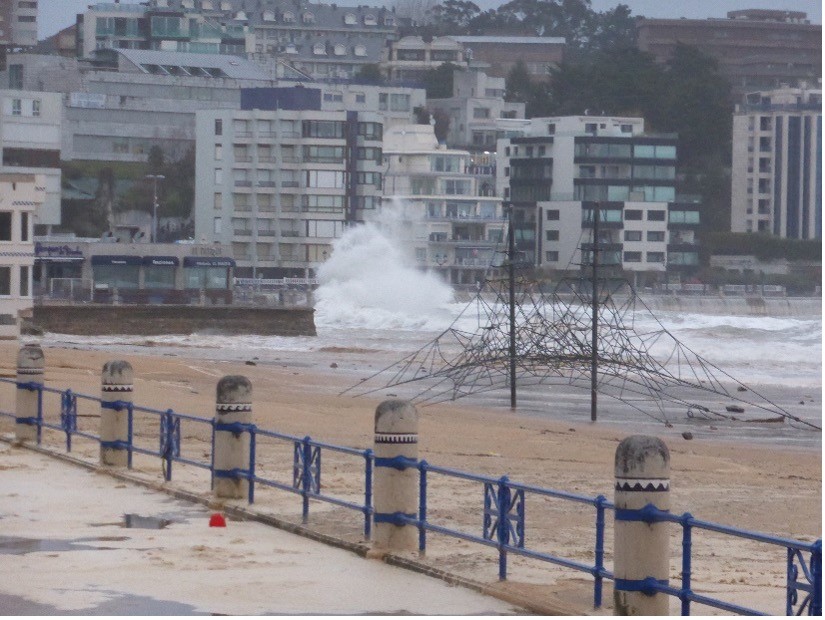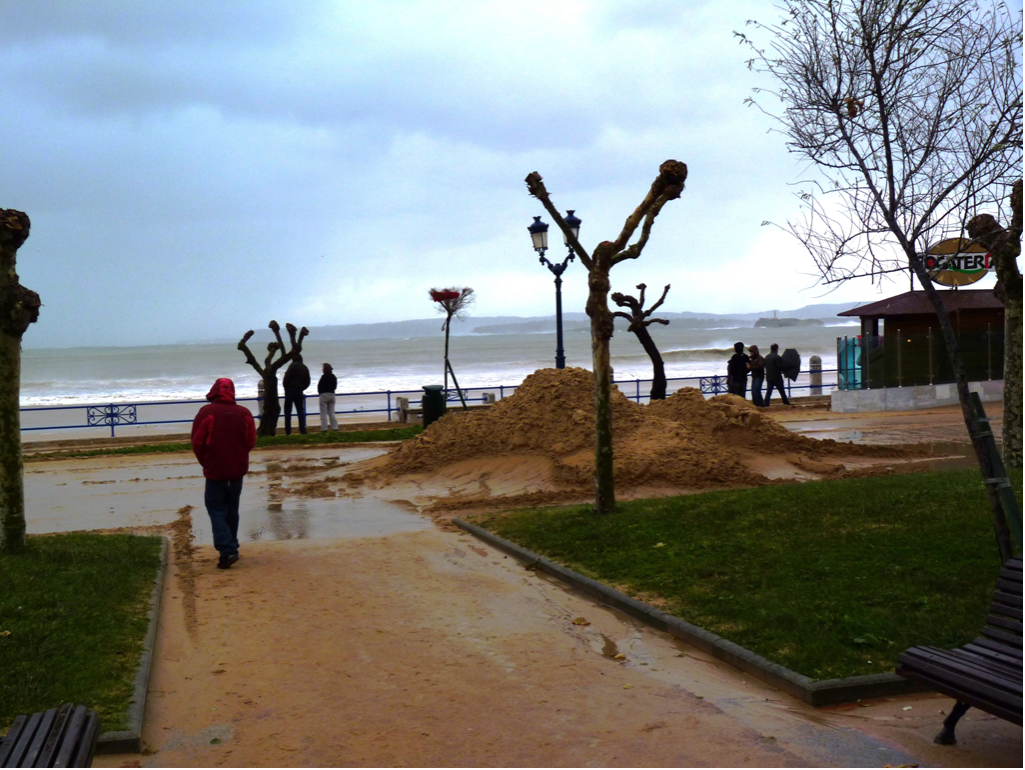IHCantabria drives digital adaptation to climate change on the Spanish coast with the CoastDiTwin project

Extreme erosion and flooding event of March 3, 2014 in El Sardinero, Santander.
This project represents not only a significant scientific breakthrough, but also a crucial step towards sustainable and adaptive coastal management in the era of climate change.
The project called “Scientific-technical basis of a digital twin for climate change adaptation of the Spanish coast (CoastDiTwin)” marks a significant milestone in the search for advanced solutions to overcome the challenges arising from extreme events and climate change on the coast. It is being developed by an outstanding team of researchers from the Environmental Hydraulics Institute of the Universidad de Cantabria (IHCantabria).
CoastDiTwin is part of the Ecological Transition and Digital Transition 2021 Projects, which stand out for addressing crucial issues of our time. Climate change is leading to a rise in mean sea level and more frequent extreme erosion and flooding events, which translates into an increasing risk for coastal communities. Effective management of this problem requires advanced tools to characterize coastal impacts and risks with as little uncertainty as possible; this is where this project comes into play.
“CoastDiTwin tries to address the analysis of flood and erosion impacts and risks in an integrated way, solving the equations of the physics of the processes enriched with observations,” says Alexandra Toimil Silva, researcher in the Climate Risk, Adaptation and Resilience Group at IHCantabria. She is one of the principal investigators (PI) of this project, together with IHCantabria’s Research Director, Íñigo Losada.
The overall objective of CoastDiTwin is to develop the scientific-technical basis to build a “digital twin” that will address the study of coastal flooding and erosion impacts and risks considering the effect of incorporating adaptive measures such as conventional and nature-based engineering solutions” explains Alexandra Toimil.
CoastDiTwin developments are structured in modules that address aspects such as the identification and regionalization of climate variables such as waves and sea level; the joint modeling of coastal flooding and erosion impacts; the collection, processing and assimilation of observations; the analysis of risks derived from the combined effect of flooding and erosion; the selection and implementation of adaptation measures; and the management of uncertainty, which will be bounded throughout the process.
The results will be materialized in a prototype that will constitute a digital replica of the current and future state of two stretches of the Spanish coast, one located in the Mediterranean and the other on the Atlantic side. The prototype will be integrated in a web platform where the user will be able to define scenarios, choose solutions and apply models to know the response of the coast.
With an important long-term vision
CoastDiTwin’s long-term goal is to develop a digital twin of the Spanish coast. This resource will be available as a web service in the cloud and will become a crucial tool for specialists and managers, including the Directorate General for the Coast and the Sea of the Ministry for Ecological Transition and Demographic Challenge (MITECO).
More information on the characteristics of the CoastDiTwin project, through the following link: https://coastditwin.ihcantabria.com/

Consequences in El Sardinero, Santander, after the storm of February 2, 2014.
Project TED2021-131885B-100 funded by:



